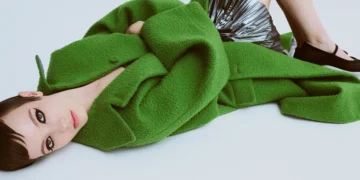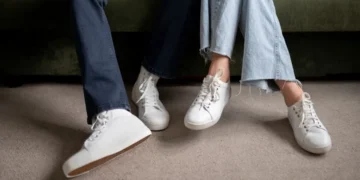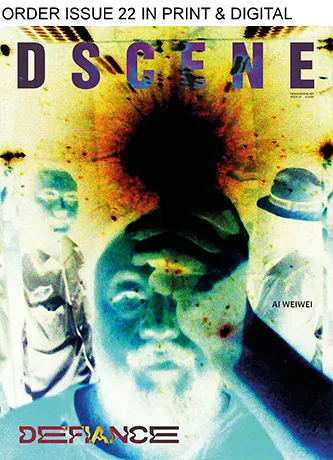
From artisan village hand-dyed indigos to environment-responsive smart textiles, the history of fabric innovation has always been the history of identity, for designers, for wearers, and for the cultures they represent. Where tradition meets technology, new patterns of expression are created.
In this article, we’ll explore three key forces redefining textile identity in fashion today: material experimentation, cultural layering, and digital democratization. Whether you are a designer, textile lover, or someone drawn to the tactile poetry of cloth, this is an invitation to view fabric as more than background.
Material Alchemy: Before Cotton and Silk
Material innovation is perhaps most exciting for fashion. Technology and fiber advancements allow for fabrics that react to temperature, humidity, light, or even movement. Pioneers like the AFFOA Institute pave the way, merging electronics and sensing in yarn. Fibers are no longer inert but active.
Sustainability is another driver. Piñatex (pineapple fibers), seaweed yarns, and lab-created fabrics blur the boundary between nature and design. These materials offer new textures and authentic value for brands seeking distinction. Apparel companies like Threadheads illustrate how fashion labels can merge creative design with accessible, sustainably made products, bringing innovation directly to everyday wearers.
Choosing a fiber is choosing a voice: one of fluorescent mesh chants of bleeding-edge performance, another of biodegradable whispering rebirth.

Cultural Threads: Heritage & Hybrid Weaving
Innovation doesn’t destroy heritage, but frames upon it. Designers reinterpret traditional weaving, block print, or dying techniques in new silhouettes in many instances.
Dabu printing (mud-resist block printing) in Rajasthan is being rekindled in slow circles, combining geometric motifs and natural colors with new-age cuts. The hybrids indicate that memory and modernity are compatible on the same cloth.
These fabrics capture heritage in motion: a saree woven on a village loom, re-engineered through performance fibers, remains a cultural statement while speaking in new voices.
Making at Scale: Digital Tools Meet Human Hands
The advent of CAD, algorithmic patterning, and 3D knitting has transformed the way designers think about and make textiles. Shapes can be virtually modeled, tried out on screen, and transmitted directly to machines, waste minimized, and speed increased.
Examples include ExoFabric, which employs thermoplastic yarn that moves from rigid to elastic, or e-knit systems enabling sensors implanted in the fabric to be moved into new positions without having to reweave. All these technologies transform fabric into an interactive canvas, dynamic, changing, and personalized.
Democratizing the Loom: Platforms, Communities & Access
Tradition weaving used to be identified with villages or guilds. Now, the internet brings artisans, designers, and collectors together from different continents. A Kerala designer can post swatch ideas, a Seoul fiber artist can convert them digitally, and a Mexican maker can convert them as quilts.
These types of communities maintain conversation about textile identity, balancing business and art with open streams of creative juices. They make sure innovation is not only a laboratory specialization but a world, public discussion.

Wearing Identity: The Emotional Life of Fabric
Clothing is a second skin. Fabrics hold memory: the drape of a grandmother’s cotton, the weight of a local handloom, the slick mesh of sportswear. When innovation serves identity, it resonates more deeply than novelty alone. A collector may prize a weave that shifts with light, a traveler may seek ultralight ergonomic mesh, and a designer may use fabric as manifesto. Textile vocabularies today allow us to wear not just styles, but statements.
Challenges & Ethical Considerations
New possibilities bring new dilemmas. Can smart fabrics be recycled? Do novel fibers strain fragile supply chains? Will digital tools sideline artisans while labs surge ahead?
Global standards matter more than ever. Institutions such as the Textile Institute set guidelines for quality, safety, and fairness. Aligning innovation with certification helps prevent waste, greenwashing, or unsustainable practices.
Cultural vitality is also at stake. As DesignScene highlighted in “4 Ways Sustainable Design Is Transforming Fashion,” discourse and critique are vital to keep innovation grounded in ethics rather than spectacle.
The Loom That Binds
Identity weaving through textile innovation is not a fleeting trend, it’s a redefinition of how we express who we are, where we come from, and where we are going. In every smart fabric, in every revived heritage technique, and in every digital community, identity emerges as fluid, not fixed.
When materials themselves can sense, adapt, and transform, fashion evolves into a living text. Designers are no longer just clothing bodies, they are writing stories in fiber.
Images from Gamine Chic by Luca Soncini – See full story here.



















